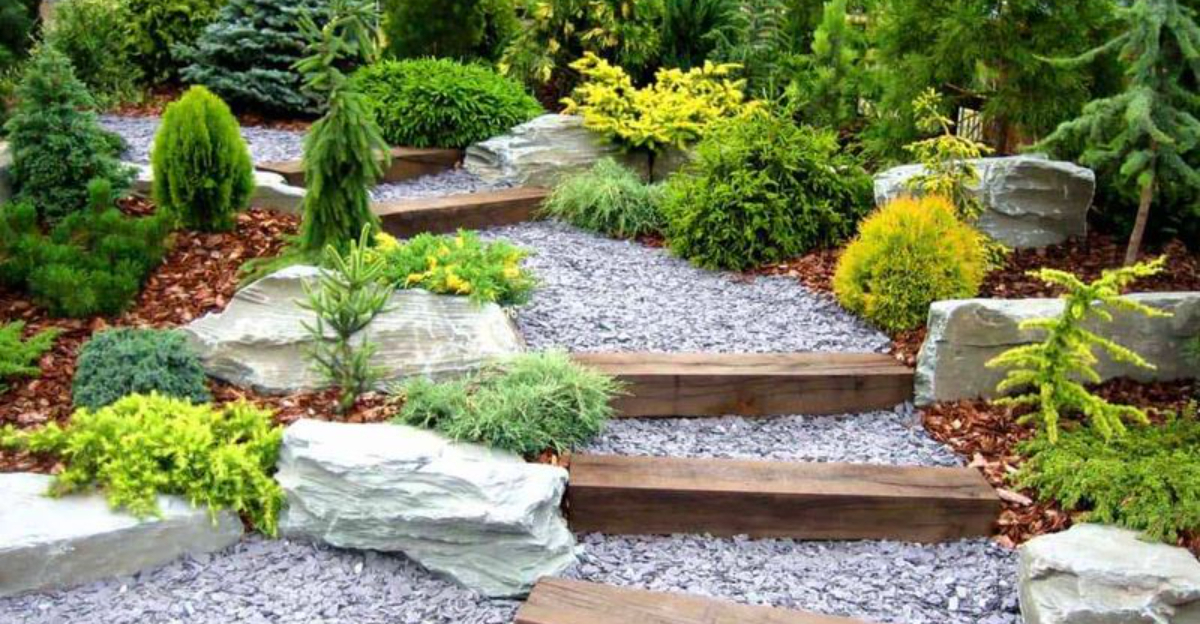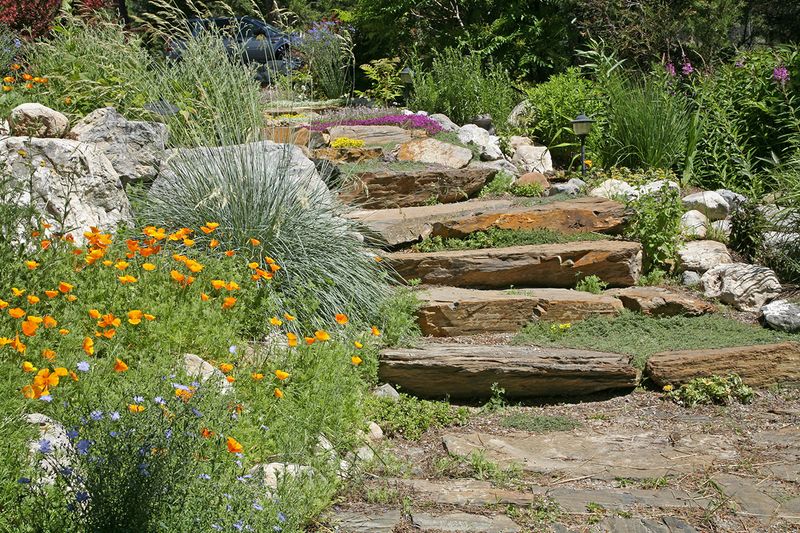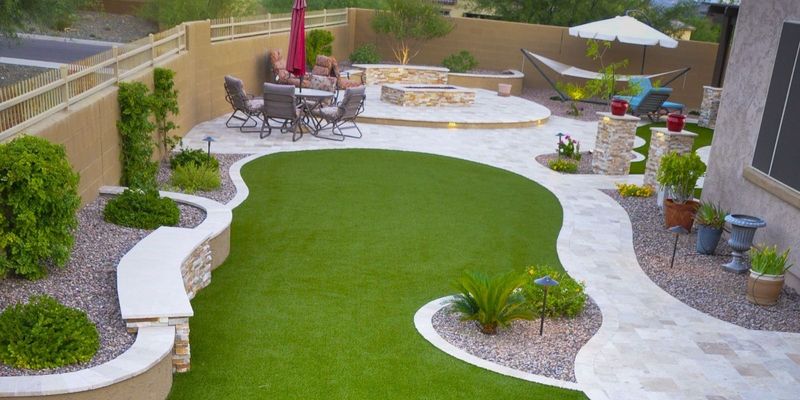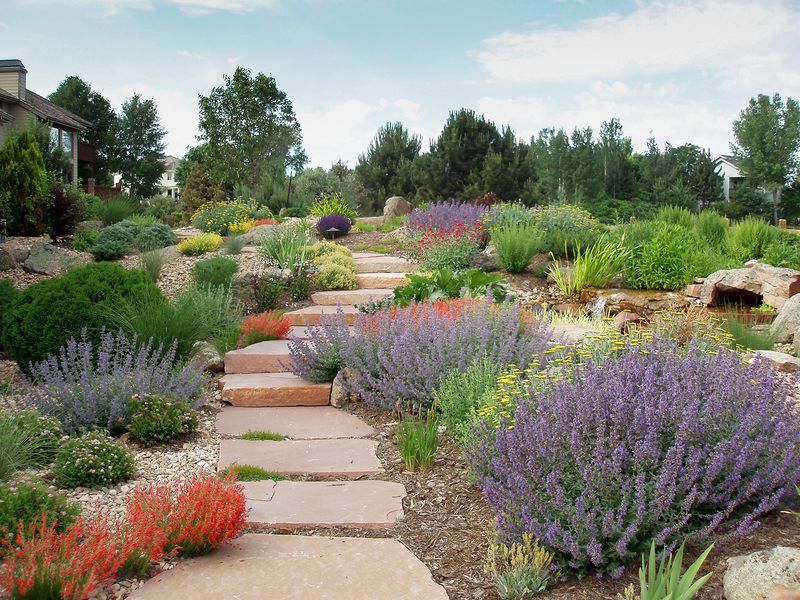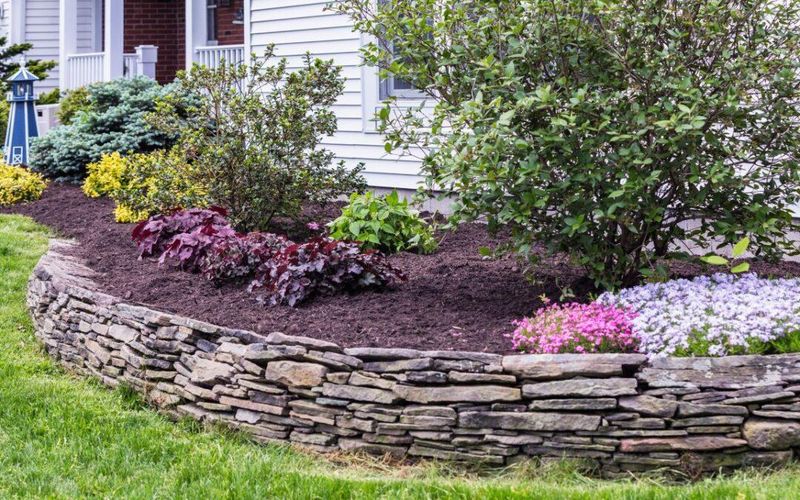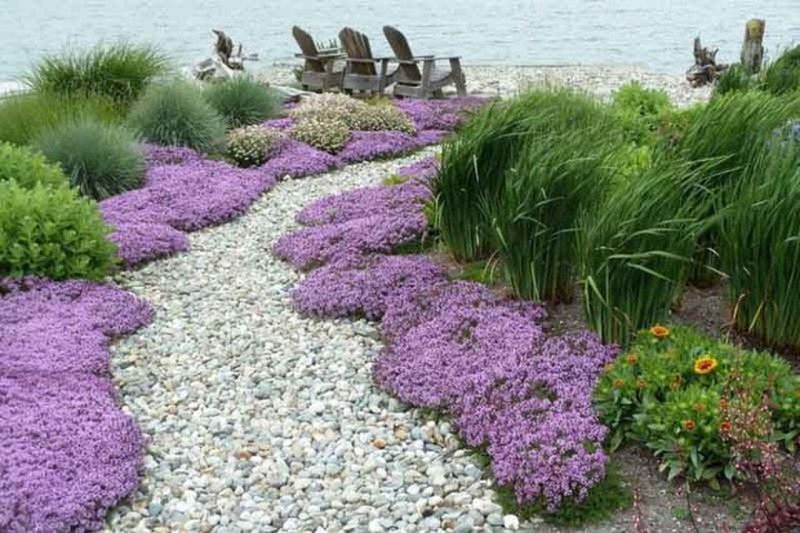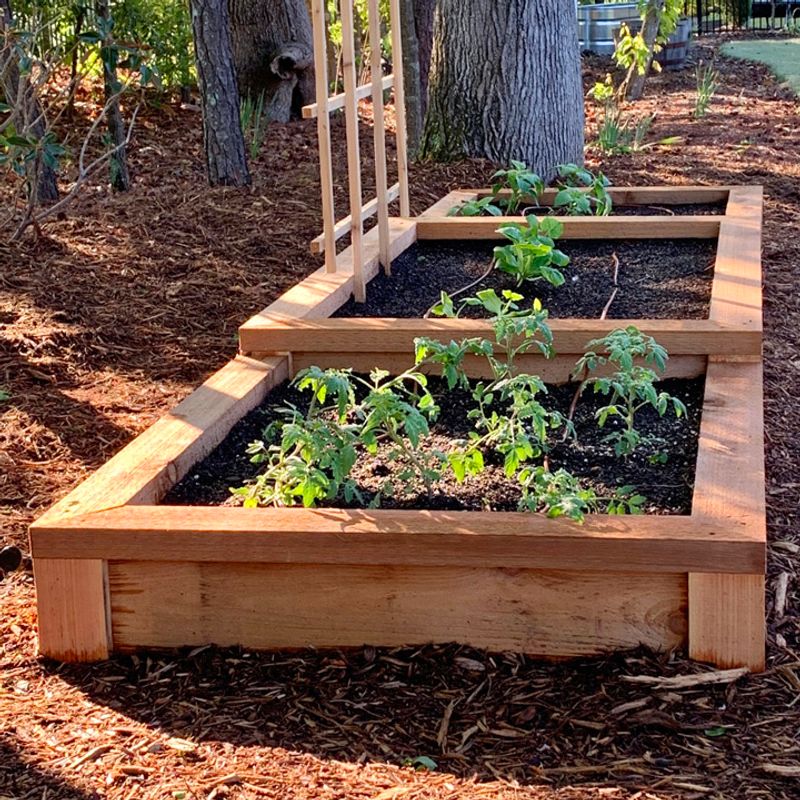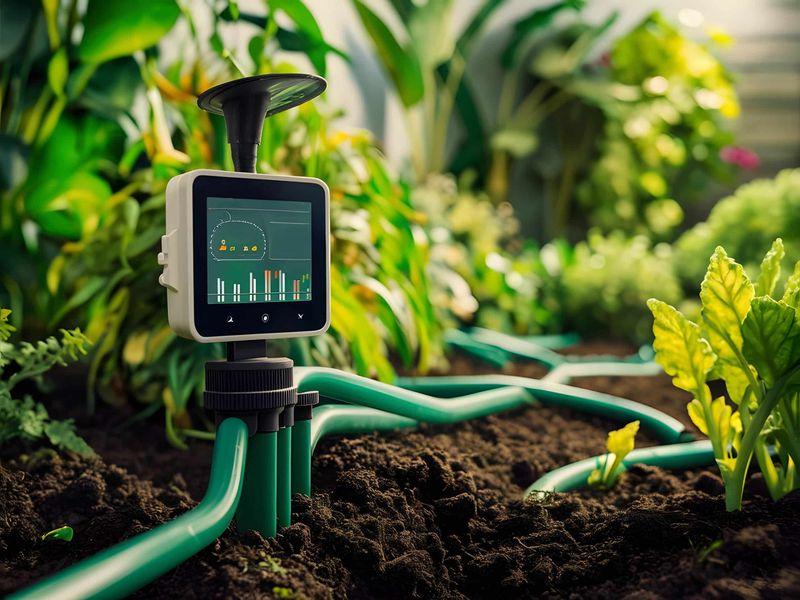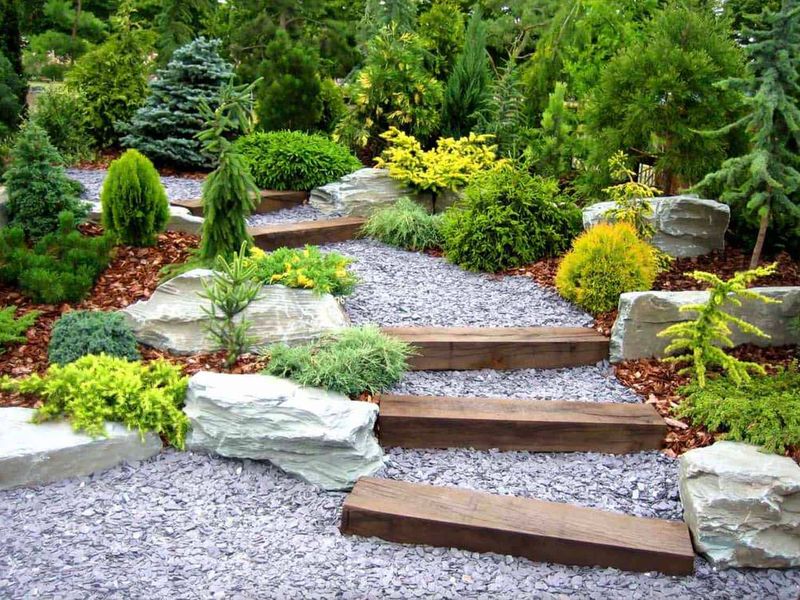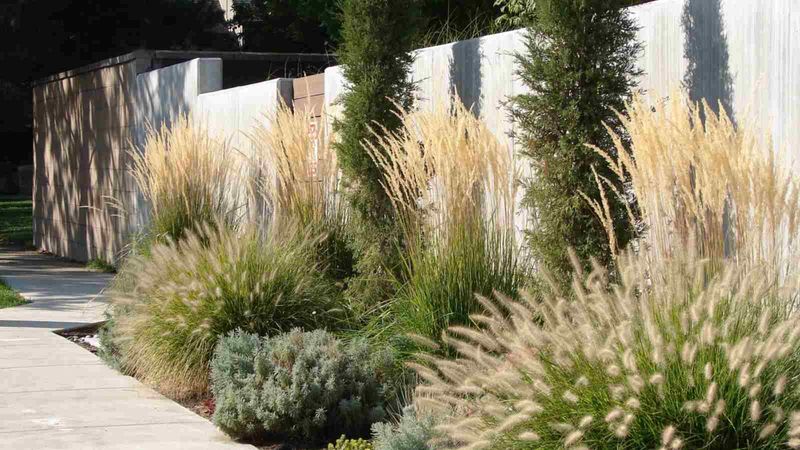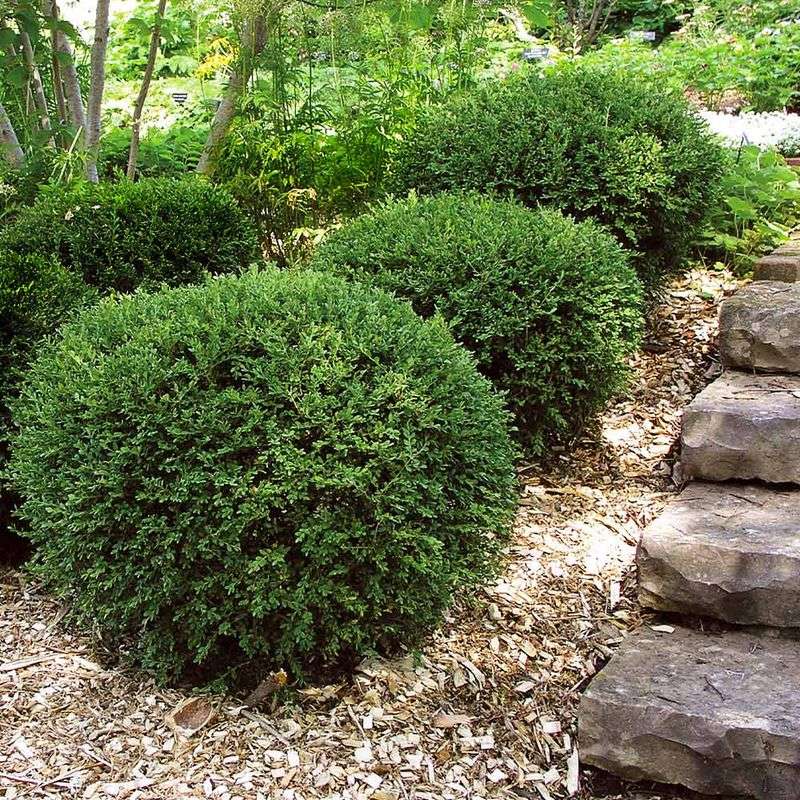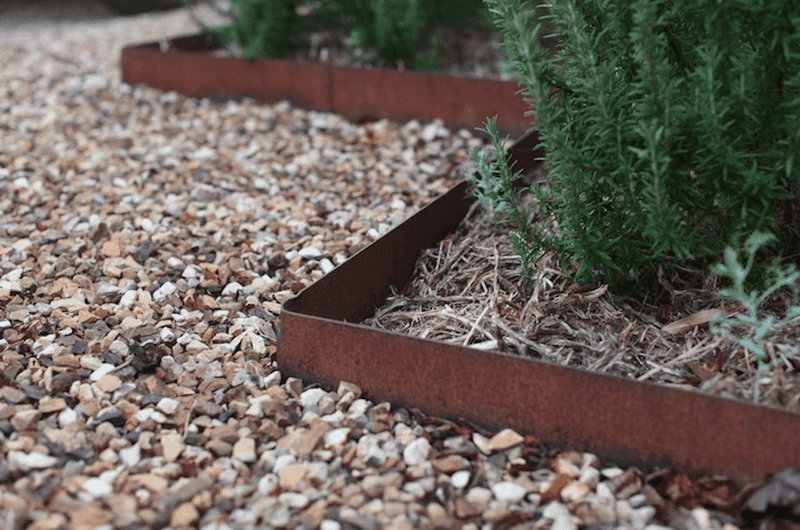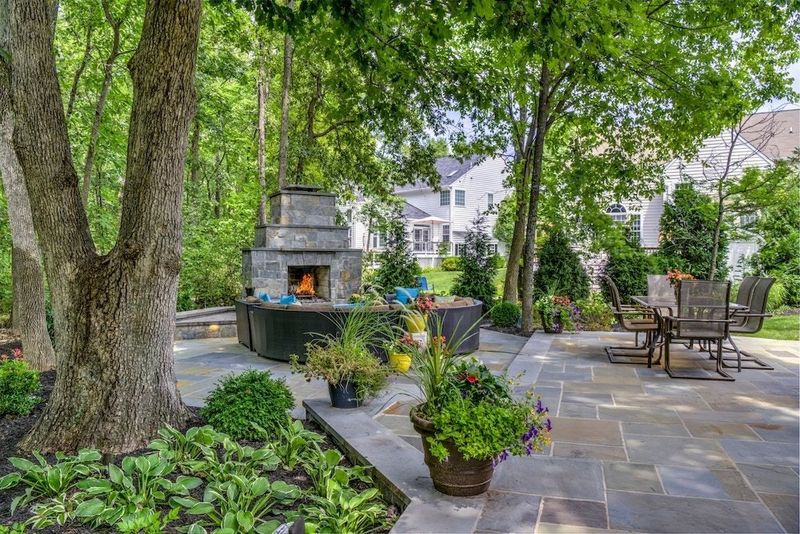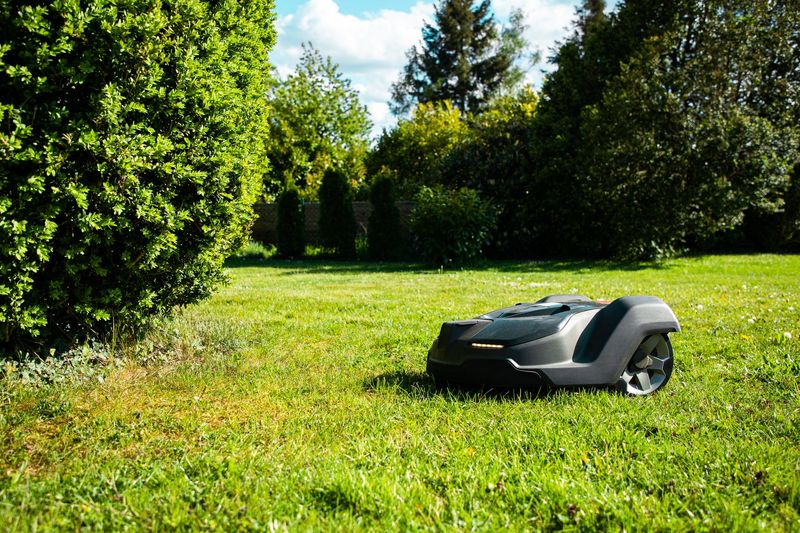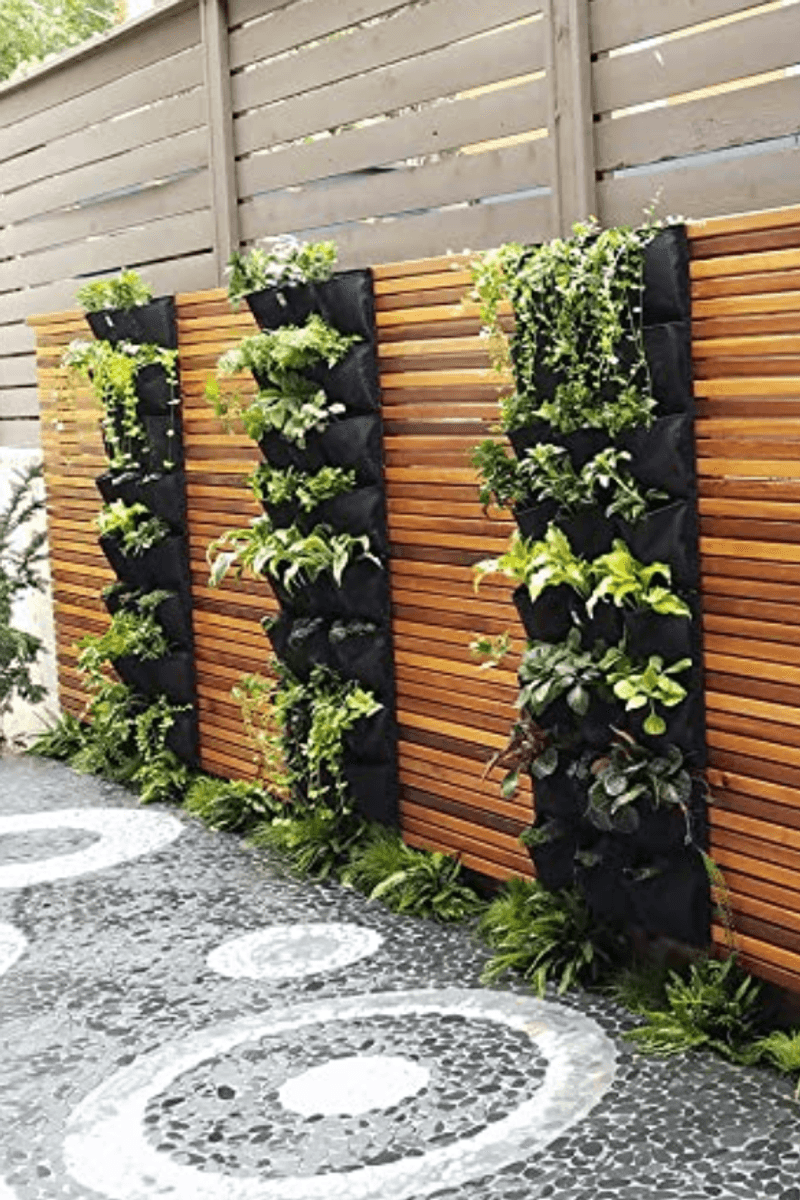A yard can be stunning without turning into a full-time job. For those who would rather enjoy their outdoor space than constantly maintain it, smart landscaping choices make all the difference. Hardy plants, clever layouts, and effortless features can create a beautiful, welcoming yard that practically runs itself.
No endless mowing, trimming, or weeding marathons required. If pulling out the lawn mower feels like a punishment, these ideas are designed with you in mind.
Get ready to discover landscaping solutions that look amazing, feel easy, and leave you with more time to actually enjoy your home.
1. Rock Gardens
Ever wondered why desert resorts look so stunning with minimal maintenance? Rock gardens mimic this aesthetic while slashing your yard work time dramatically.
Arranging decorative stones of various sizes and colors creates visual interest without needing weekly attention. Between the rocks, plant drought-resistant succulents that thrive on neglect.
The best part? No mowing, minimal weeding, and virtually no watering once established. Just occasional raking of leaves and perhaps some light pruning every few months will keep your rock garden looking pristine year-round.
2. Native Plant Landscaping
Mother Nature knows best when it comes to low-maintenance gardening. Plants that naturally grow in your region have already adapted to local rainfall, soil conditions, and climate patterns.
When you choose native species, you’re essentially working with plants that have evolved to thrive in your specific environment without extra help. They typically require less water, fertilizer, and pest control than exotic varieties.
As an added bonus, native plantings support local pollinators and wildlife, creating a mini-ecosystem in your yard. Check with local nurseries or extension offices for recommendations tailored to your specific area.
3. Artificial Turf
Gone are the days when fake grass looked obviously plastic! Modern artificial turf has come a long way, with options that look surprisingly realistic while eliminating the need to mow, water, or fertilize.
Installation costs more upfront than natural grass, but consider the long-term savings: no lawn mower, no water bills, no fertilizer, and no weekend hours spent pushing that mower. Just occasional rinsing and brushing keeps it looking fresh.
Many newer varieties are eco-friendly and permeable, allowing rainwater to drain through. Perfect for play areas, pet zones, or anywhere you want green space without the maintenance headaches.
4. Xeriscaping
Hailing from the Greek word “xeros” meaning “dry,” xeriscaping is the art of designing landscapes that require minimal water. This approach is perfect for busy homeowners in drier climates.
By grouping plants with similar water needs and emphasizing drought-tolerant species, you create a yard that thrives with natural rainfall. Decorative gravel, permeable hardscaping, and efficient irrigation further reduce maintenance needs.
While often associated with desert aesthetics, xeriscaping can be adapted to any region with thoughtful plant selection. The result? A beautiful landscape that sips rather than gulps water, saving you time, money, and effort.
5. Mulched Beds
Imagine cutting your weeding time by 80% while improving your soil health. That’s the magic of proper mulching! A thick layer of organic mulch (3-4 inches) suppresses weeds, retains moisture, and gradually breaks down to feed your plants.
Choose from options like shredded bark, pine straw, cocoa hulls, or even compost. Beyond weed prevention, mulch moderates soil temperature, reducing stress on plants during extreme weather.
For truly minimal maintenance, install landscape fabric beneath the mulch around permanent plantings. Refresh the top layer annually, and you’ll spend more time enjoying your garden than maintaining it.
6. Hardscaping Features
Who says a beautiful yard needs to be all plants? Patios, walkways, and decorative walls add structure and function while reducing the square footage that requires maintenance.
Materials like concrete, natural stone, pavers, and gravel create interest without needing water or trimming. These hardscape elements provide places to gather, paths to wander, and focal points that look good year-round.
Strategic placement of these features can transform problem areas (like spots where grass won’t grow) into assets. Add a few container plants for color, and you’ve created spaces that look intentional rather than neglected—without the weekly upkeep.
7. Ground Cover Plants
Forget fighting with your lawn mower on hillsides or in awkward corners! Ground cover plants create carpets of green (or other colors) that spread to fill spaces without requiring regular cutting.
Options like creeping thyme, sedum, pachysandra, or ajuga crowd out weeds naturally once established. Many varieties offer seasonal flowers or interesting foliage, adding visual interest beyond basic grass.
The key to success is proper soil preparation before planting and consistent watering until established. After that, most ground covers need only occasional trimming at the edges to keep them in bounds—a far cry from weekly mowing.
8. Raised Garden Beds
Knee-friendly and weed-resistant, raised beds bring gardening up to a comfortable height while creating clear boundaries for plants. The elevated design prevents lawn grass from invading your planting areas and improves drainage.
Fill these structures with quality soil mixed specifically for your plants’ needs. The controlled environment means fewer weeds, easier maintenance, and better growing conditions for vegetables, herbs, or flowers.
For maximum convenience, consider adding drip irrigation on a timer. This combination delivers water precisely where needed with minimal waste, freeing you from daily watering chores while keeping plants healthy with consistent moisture.
9. Automatic Irrigation Systems
Dragging hoses around the yard becomes a thing of the past when you install a smart irrigation system. Modern options connect to weather forecasts and soil moisture sensors to water only when truly necessary.
Drip lines deliver water directly to plant roots, reducing waste and preventing the leaf wetness that encourages disease. Programmable timers ensure watering happens in the early morning hours—optimal for plant health and water conservation.
While installation requires an initial investment, the time savings are immense. Plus, many systems can be controlled from your smartphone, allowing you to adjust watering schedules even when you’re away from home.
10. Decorative Gravel
Crunching underfoot with each step, decorative gravel offers an attractive alternative to high-maintenance lawns or mulched areas. Available in various colors and sizes, these stone particles create visual interest while serving practical purposes.
Unlike organic mulches that decompose annually, gravel stays put for years with minimal refreshing needed. A quality weed barrier underneath prevents unwanted growth, though occasional spot-treatment of persistent weeds might be necessary.
Beyond pathways, gravel works beautifully in rain gardens, around fire pits, or as mulch for drought-tolerant plants. The material’s excellent drainage properties make it ideal for areas that tend to remain wet after rain.
11. Container Gardening
Feeling overwhelmed by a large yard? Container gardening concentrates your efforts into manageable, beautiful focal points without committing to extensive beds that need weeding and maintenance.
Large, weather-resistant pots grouped together create significant visual impact while limiting the actual planting area. Choose self-watering containers or install drip irrigation with timers to reduce daily watering chores.
For truly minimal upkeep, select drought-tolerant perennials, ornamental grasses, or shrubs rather than thirsty annuals. The contained environment also makes it easier to control soil quality and fertility, often resulting in healthier plants with less effort.
12. Ornamental Grasses
Swaying gracefully in the breeze, ornamental grasses create movement and texture while demanding almost nothing in return. These versatile plants thrive in poor soil conditions where other plants struggle.
Most varieties need cutting back just once annually, typically in late winter before new growth begins. Their deep root systems make them drought-resistant once established, and many species remain attractive through winter with interesting seed heads and dried foliage.
From towering miscanthus to compact fescues, there’s a grass for every landscape need. Their natural resistance to pests and diseases means you’ll rarely need to intervene with treatments or special care routines.
13. Slow-Growing Shrubs
Constantly pruning fast-growing hedges can feel like a never-ending battle. Switching to naturally compact, slow-growing shrubs dramatically reduces your maintenance schedule from monthly to yearly.
Varieties like boxwood, inkberry holly, and certain junipers maintain their shape with minimal intervention. Their naturally dense growth habits mean less frequent pruning to maintain a tidy appearance, and many offer year-round interest through evergreen foliage.
For maximum time savings, space plants according to their mature width rather than cramming them close together. This foresight eliminates the need for regular pruning to prevent overcrowding, letting the plants naturally grow into their intended form.
14. Defined Edges
Clean lines make the difference between a low-maintenance yard that looks intentional versus one that appears neglected. Installing permanent edging creates sharp boundaries between different landscape areas.
Materials like metal, plastic, concrete, or stone prevent grass from invading beds and mulch from spilling onto lawns. This separation reduces the tedious task of re-cutting edges every season and makes mowing faster without the need for string trimming.
For maximum effectiveness, choose edging that rises slightly above ground level to create a physical barrier. The initial installation takes some effort, but the time saved on ongoing maintenance more than compensates for this upfront work.
15. Strategic Tree Placement
Thoughtful positioning of trees does double-duty in a low-maintenance landscape. Properly placed shade trees naturally suppress grass growth underneath, reducing mowing areas while creating cool retreats during summer months.
Select varieties with minimal fruit or seed drop to avoid constant cleanup. Evergreens provide year-round screening without the leaf raking that deciduous trees require each fall.
For truly carefree options, native species adapted to your local conditions require little supplemental watering once established. Avoid trees with aggressive surface roots or those known for brittle branches that create storm cleanup. A well-chosen tree is an investment that increases in value while decreasing work.
16. Robotic Lawn Mowers
While you’re relaxing on your deck, a robotic helper can handle the lawn maintenance. These increasingly affordable devices work like automated vacuum cleaners but for your grass, maintaining a consistent height without human intervention.
Most models operate within a perimeter wire that defines their boundaries, returning automatically to charging stations when batteries run low. The frequent cutting pattern produces fine clippings that decompose quickly, eliminating bagging while naturally fertilizing the lawn.
Beyond the obvious time savings, robotic mowers typically operate more quietly than conventional mowers and produce zero emissions during operation. For those who want a traditional lawn without the traditional work, this technology offers the perfect compromise.
17. Vertical Gardens
Running out of horizontal space doesn’t mean giving up on greenery! Vertical gardens maximize impact while minimizing the actual ground area requiring maintenance.
Wall-mounted planters, trellises, and specialized vertical systems allow plants to grow upward rather than outward. This approach works particularly well for small spaces like urban patios or narrow side yards.
For easiest care, incorporate drip irrigation systems that water from top to bottom, and choose plants suited to the specific light conditions of your vertical surface. Succulents, herbs, and certain ornamentals thrive in these systems while creating living art that transforms plain walls into eye-catching features.

